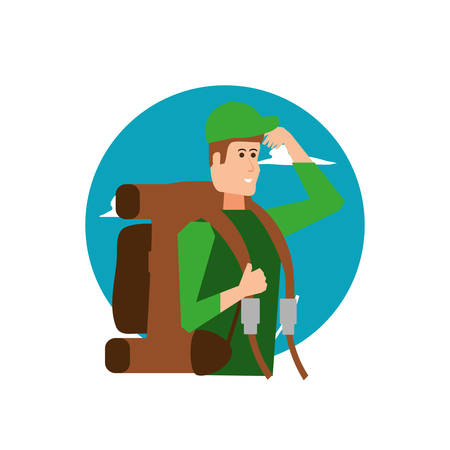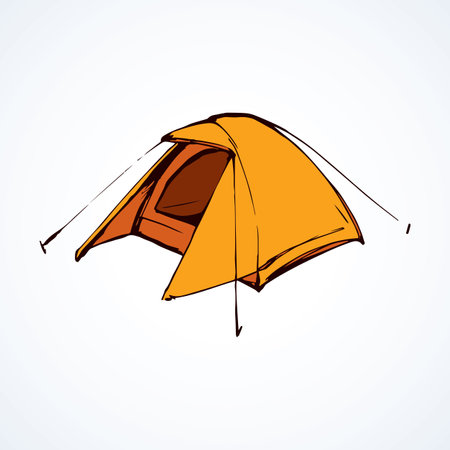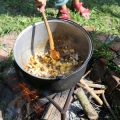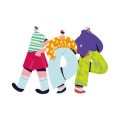1. Why Clean Water Matters in the Outdoors
When youre out camping, whether its deep in the backcountry or at a local state park, having access to clean drinking water is one of the most important things you need to stay healthy and safe. Many natural water sources like rivers, lakes, and streams may look clean, but they often contain harmful microorganisms that can make you sick.
Understanding the Risks of Untreated Water
Drinking untreated water can expose you to a range of health risks. These include bacteria, protozoa, and viruses that are commonly found in outdoor water sources. Here’s a quick breakdown of what these are and how they can affect you:
| Contaminant Type | Examples | Possible Health Effects |
|---|---|---|
| Bacteria | E. coli, Salmonella | Diarrhea, cramps, nausea |
| Protozoa | Giardia, Cryptosporidium | Prolonged diarrhea, stomach pain |
| Viruses | Norovirus, Hepatitis A | Vomiting, fever, fatigue |
Why You Need a Reliable Water Filtration and Storage System
No matter how short your trip is or how clear the water looks, using a proper filtration system is essential. Filtration devices remove most bacteria and protozoa, while purification methods like UV light or chemical treatments can help deal with viruses too. Along with filtering your water, storing it safely in clean containers helps prevent recontamination.
Key Reasons to Use Filtration and Storage Systems:
- Health Protection: Prevents waterborne illnesses that could ruin your trip.
- Convenience: Lets you collect and store clean water for cooking, cleaning, and drinking.
- Preparedness: Keeps you ready for emergencies where clean water might not be immediately available.
Pro Tip:
Always carry a backup method like purification tablets or a small UV purifier in case your main filter fails or gets damaged.
Clean water isnt just about comfort—its about keeping yourself safe and healthy throughout your camping adventure.
2. Types of Water Filtration Methods
When youre out camping in the U.S., especially in backcountry areas, having a reliable way to filter and purify water is essential. There are several popular methods used by campers across the country, each with its own pros and cons. Let’s break down the most common types so you can find the right fit for your adventures.
Pump Filters
Pump filters are classic and reliable. You use a hand pump to draw water through a filter, removing bacteria and protozoa. These are great for pulling water from shallow sources like creeks or puddles.
Pros:
- Effective against bacteria and protozoa
- Good for shallow or hard-to-reach water sources
- Immediate filtration
Cons:
- Can be bulky and heavy
- Requires physical effort to operate
- Filter can clog if not maintained properly
Gravity Filters
These systems use gravity to pull water through a filter—no pumping required. Just fill the dirty water bag, hang it up, and let gravity do the work.
Pros:
- Great for groups—can filter large amounts at once
- No pumping needed
- Less physical effort
Cons:
- Takes longer than pump filters
- Need a place to hang the bag high enough
- Larger and less compact than other options
Squeeze Filters
Squeeze filters are super popular among ultralight backpackers. You fill a soft bottle or pouch with dirty water and squeeze it through a small filter into your clean container.
Pros:
- Lightweight and compact
- Simple to use
- Affordable option
Cons:
- Pouches can wear out over time
- Takes some effort to squeeze water through
- May clog with silty water without pre-filtering
UV Purifiers
UV light purifiers like the SteriPEN use ultraviolet light to kill bacteria, viruses, and protozoa. Theyre fast and easy but require batteries or charging.
Pros:
- Kills viruses (which filters don’t)
- No aftertaste or chemicals involved
- Treatment is quick—usually under a minute per liter
Cons:
- Doesn’t remove debris or dirt from water
- Batteries can run out in the field
- Must be used with clear water for effectiveness
Chemical Tablets or Drops
Chemical treatments like iodine tablets or chlorine dioxide drops have been around forever. They’re super lightweight and easy to carry as a backup method too.
Pros:
- Kills most pathogens including viruses (chlorine dioxide)
- No gear required—just drop in your bottle and wait
- Takes up almost no space in your pack
Cons:
- Takes time—up to 30 minutes or more depending on conditions
- Iodine leaves an unpleasant taste (chlorine dioxide is better)
- Ineffective at removing dirt or debris from cloudy water
Comparison Table: Common Water Filtration Methods for Camping in the U.S.
| Method | Main Benefit | Main Drawback | Treats Viruses? |
|---|---|---|---|
| Pump Filter | Fast and works in shallow water sources | Tiring to use; bulky gear | No |
| Gravity Filter | No effort required; good for groups | Takes longer; needs elevation | No |
| Squeeze Filter | Ultralight and compact | Pouches can wear out | No |
| UV Purifier | Kills all major pathogens quickly | Batteries needed; doesn’t remove particles | Yes |
| Chemical Tablets/Drops | Tiny, cheap, effective backup option | Takes time; taste may be off | Iodine – Yes; Chlorine Dioxide – Yes |
Selecting the right filtration method depends on where you’re camping, how many people are in your group, how much weight you want to carry, and your personal comfort level with each system. Each method serves different needs, so many campers choose a primary system and bring a backup just in case.

3. How to Choose the Right Water Source
When youre out camping in the backcountry, finding a good water source is just as important as knowing how to filter it. Not all natural water is safe to drink, even if it looks clean. Learning how to identify safe sources and avoid risky ones will help keep you hydrated and healthy on your trip.
Safe Water Sources
The best places to collect water are from moving sources like streams, creeks, or rivers. These are usually safer because flowing water is less likely to contain harmful bacteria or parasites. Lakes and large ponds can also be used, but they should be clear and away from any signs of contamination.
Look for:
- Flowing water: Streams and creeks with visible movement.
- Clear appearance: Avoid murky or discolored water.
- Upstream collection: Always collect water upstream from where people or animals may be active.
Water Sources to Avoid
Certain water sources should raise red flags. Stagnant water, like puddles or small ponds with no movement, often harbors bacteria and insects. Also steer clear of any sources near livestock, campgrounds, or areas with visible human activity.
Avoid if you see:
- Stagnant water: No flow or surface movement.
- Nearby animal activity: Droppings, hoof prints, or animal tracks.
- Campsites or trails nearby: Could indicate contamination from soap, waste, or trash.
Quick Comparison Guide
| Water Source | Safe? | Notes |
|---|---|---|
| Fast-moving stream | Yes | Best option; look upstream for contamination |
| Lake (clear) | Yes (with caution) | Avoid edges; collect from center if possible |
| Pond (stagnant) | No | Likely to have bacteria and insects |
| Near livestock area | No | High risk of fecal contamination |
| Puddle on trail | No | Easily contaminated by humans and animals |
Pro Tip:
If youre unsure about a water source, always err on the side of caution. Its better to spend extra time finding a cleaner spot than risk getting sick in the middle of your camping trip.
Selecting the right water source is the first step toward safe hydration outdoors. Once you’ve found a reliable source, your next move is filtering and storing that water properly—something we’ll cover in the next section.
4. Best Practices for Water Storage at Camp
Once youve filtered your water, proper storage is key to keeping it clean and safe for drinking. Whether youre car camping or backpacking, how you store water can make a big difference in taste, safety, and convenience.
Choose the Right Containers
Using the right type of container helps ensure your water stays fresh and free from harmful chemicals. Here are a few popular options:
| Container Type | Best For | Key Features |
|---|---|---|
| BPA-Free Plastic Bottles | Short trips, day hikes | Lightweight, reusable, chemical-safe |
| Stainless Steel Bottles | Cold weather camping | Durable, keeps water cool, no plastic taste |
| Collapsible Water Bags | Backpacking, space-saving needs | Flexible, lightweight, easy to pack |
| Large Camp Reservoirs (e.g., 5-7 gallon jugs) | Base camps, group camping | Stores large volumes, often have spigots for easy use |
Keep Your Water Cool and Out of Sunlight
Direct sunlight and heat can encourage bacterial growth and make your water taste off. Whenever possible, store your water containers in the shade or cover them with a towel or tarp. If youre camping in hot climates, consider burying a jug partially in the ground or placing it under your vehicle for extra cooling.
Avoid Cross-Contamination
To keep your clean water safe:
- Always use clean hands when handling bottles or caps.
- Don’t dip dirty cups or utensils directly into your clean water supply.
- If youre using a hydration bladder or bottle with a built-in straw, rinse it out regularly to prevent mold build-up.
Label Clean vs. Unfiltered Water
If you’re storing both untreated and filtered water at camp, clearly label each container. This helps avoid accidental use of unfiltered water for cooking or drinking.
Pro Tip:
Add a small amount of ice or chill your filtered water before heading out if you have access to a cooler—cold water stays fresher longer and tastes better after a long hike!
Rotate and Refill Daily
If you’re camping for multiple days, aim to refresh your stored water every day. Bacteria can grow even in filtered water if its left sitting too long in warm conditions. It’s better to filter smaller amounts more frequently than store large quantities for several days.
Your Camp Setup Matters
If youre setting up a base camp, try creating a “hydration station” with your main reservoir elevated on a table or crate so everyone can easily fill bottles without tipping over the container. Keep this area clean and separate from cooking zones to reduce the risk of spills or contamination.
By following these simple practices, you’ll have access to safe, great-tasting drinking water throughout your camping adventure.
5. Real-World Tips from Experienced Campers
When youre out camping—whether its a weekend trip to Yosemite or a week-long trek through the Rockies—having clean, safe water is essential. We gathered advice from seasoned American campers who’ve spent years exploring national parks, desert trails, and remote backcountry routes. Here’s what they had to say about what really works and what to avoid.
What Works Best in Different Environments
Different terrains call for different strategies. Heres a quick breakdown based on where youre headed:
| Environment | Recommended Filtration Method | Storage Tip |
|---|---|---|
| National Parks (developed campsites) | Pump filters or gravity-fed systems | Use BPA-free water jugs or hydration bladders |
| Backcountry Trails | Squeeze filters or UV purifiers (lightweight) | Collapsible bottles save space and weight |
| Desert Areas | Pump filters with pre-filters (for sediment) | Carry extra water; natural sources may be scarce |
| Mountain Regions | Boiling + filter combo (cold temps may affect devices) | Insulated containers help prevent freezing overnight |
Common Mistakes to Avoid
- Not testing gear beforehand: Always try your filtration system at home first so you know how it works in the field.
- Assuming all water is safe: Even clear streams can carry bacteria like Giardia—always filter or purify.
- Overpacking water without planning: Carrying too much can weigh you down; plan refills along your route instead.
- Forgetting backup methods: Bring iodine tablets or a small boil kit in case your primary system fails.
- Poor storage habits: Don’t store clean and dirty water together; label your containers clearly.
Packing Tips from the Pros
The best campers keep things efficient and organized. Here are some packing tips directly from experienced trail-goers:
- “I always pack two smaller bottles instead of one large one—it gives me more flexibility on the trail.”
- “A bandana makes a great pre-filter if youre dealing with murky water.”
- “Mark your dirty and clean containers with colored tape—it saves confusion.”
- “If you’re in bear country, store your water away from scented items just to be safe.”
Stay Flexible, Stay Safe
No matter where youre headed, staying flexible and prepared will make your camping trip safer and more enjoyable. Pay attention to weather conditions, local regulations, and wildlife advisories that might affect your access to water sources. When in doubt, treat all natural water before drinking—and always have a backup plan.


